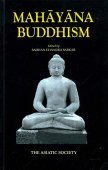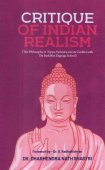Shantarakshita, Śāntarakṣita, Shantaraksita: 5 definitions
Introduction:
Shantarakshita means something in Buddhism, Pali, Hinduism, Sanskrit, the history of ancient India. If you want to know the exact meaning, history, etymology or English translation of this term then check out the descriptions on this page. Add your comment or reference to a book if you want to contribute to this summary article.
The Sanskrit term Śāntarakṣita can be transliterated into English as Santaraksita or Shantarakshita, using the IAST transliteration scheme (?).
In Buddhism
General definition (in Buddhism)
Source: WikiPedia: BuddhismŚāntarakṣita (725–788) was a renowned 8th century Indian Buddhist Brahmin and abbot of Nalanda University. Śāntarakṣita founded the philosophical school known as Yogācāra-Svatantrika-Mādhyamika, which united the Madhyamaka tradition of Nagārjuna, the Yogācāra tradition of Asaṅga and the logical and epistemological thought of Dharmakīṛti. He was also instrumental in the introduction of Buddhism and the Sarvastivadin monastic ordination lineage to Tibet which was conducted at Samye Monastery(bsam yas dgon pa).
etymology: Śāntarakṣita (Devanagari: शान्तरक्षित, also called Shantarakshita, Santaraksita, Santiraksita, Zhi-ba-tsho, and Acarya Bodhisattva)
Source: Oxford Index: BuddhismA son of the king of Sahor. He received his monastic vows from Jñānagarbha at Nālandā and became a recognized expert of the Svātantrika form of Madhyamaka. He composed several important works such as the Ornament of the Madhyamaka (Skt., Madhyamaka-alaṃkāra) and the Compendium of Truths (Skt., Tattva-saṃgraha). During the reign of Trisong Detsen, he went to Tibet in the later part of the 8th century ce where he lived for thirteen years until his death. He designed and supervised the construction of Samyé Monastery, introduced the monastic community to Tibet, and began the major task of translating Buddhist scriptures into Tibetan.
Source: academia.edu: The Chronological History of BuddhismŚāntarakśita (50-130 CE) quoted Gauḍapāda. He has repeatedly attacked Kumārila I’s Ślokavārtika. He wrote a commentary on a work of Dharmakīrti. According to Tibetan sources, Śāntarakśita visited Tibet at the invitation of King Khri-sron-deu-tsari who was born around 67 CE. Śāntarakśita worked in Tibet for 13 years. Śāntarakśita was born during the reign of Pāla King Gopāla and died during the reign of King Dharmapāla.
India history and geography
Source: academia.edu: The Chronological History of Tibetan BuddhismAccording to Tibetan sources, Śāntarakṣita visited Tibet at the invitation of King Khri-sron-deu-tsari who was born around 67 CE. Śāntarakṣita worked in Tibet for 13 years. Most probably, Śāntarakṣita was born during the reign of Pāla King Gopāla and died during the reign of King Dharmapāla. Thus, we can fix the date of Shantarakshita around 50-130 CE.

The history of India traces the identification of countries, villages, towns and other regions of India, as well as mythology, zoology, royal dynasties, rulers, tribes, local festivities and traditions and regional languages. Ancient India enjoyed religious freedom and encourages the path of Dharma, a concept common to Buddhism, Hinduism, and Jainism.
Languages of India and abroad
Sanskrit dictionary
Source: Cologne Digital Sanskrit Dictionaries: Edgerton Buddhist Hybrid Sanskrit DictionaryŚāntarakṣita (शान्तरक्षित).—name of a teacher: Mahāvyutpatti 3492.
Sanskrit, also spelled संस्कृतम् (saṃskṛtam), is an ancient language of India commonly seen as the grandmother of the Indo-European language family (even English!). Closely allied with Prakrit and Pali, Sanskrit is more exhaustive in both grammar and terms and has the most extensive collection of literature in the world, greatly surpassing its sister-languages Greek and Latin.
See also (Relevant definitions)
Full-text: Kamalashila, Haribhadra, Trisong Detsen, Tattvasamgraha, Dharmaganja, Kshanika, Bodhicitta.
Relevant text
Search found 19 books and stories containing Shantarakshita, Śāntarakṣita, Santaraksita, Shantaraksita; (plurals include: Shantarakshitas, Śāntarakṣitas, Santaraksitas, Shantaraksitas). You can also click to the full overview containing English textual excerpts. Below are direct links for the most relevant articles:
Tibet (Myth, Religion and History) (by Tsewang Gyalpo Arya)
2. Royal Patronage and the Teachings < [Chapter 7 - Buddhism in Tibet]
5. Persecution and the Decline < [Chapter 6 - Tonpa Shenrab Mibo and Bon Religion]
5. Buddhist Schools and the Politics of Tibet < [Chapter 7 - Buddhism in Tibet]
The Buddhist Path to Enlightenment (study) (by Dr Kala Acharya)
5.1. The Two Categories of Mokṣa in Jainism < [Chapter 4 - Comparative Study of Liberation in Jainism and Buddhism]
Reverberations of Dharmakirti’s Philosophy (by Birgit Kellner)
In Light of the Apoha Theory of Śāntarakṣita and Kamalaśīla
Śāntarakṣita on Two Kinds of Arguments for Self-Awareness
Two Kinds of Causal Capacity: Sāmānyā śaktiḥ and Pratiniyatā śaktiḥ
Philosophy of Charaka-samhita (by Asokan. G)
Heuristic reasoning (yukti) [in Charaka philosophy] < [Chapter 6 - Source of Knowledge (pramāṇa)]
Universal (sāmānya) and Particularity (viśeṣa) [in Charaka philosophy] < [Chapter 2 - Fundamental Categories]
A History of Indian Philosophy Volume 2 (by Surendranath Dasgupta)
Part 20 - Dialectical criticisms of Śāntarakṣita and Kamalaśīla (a.d. 760) < [Chapter XI - The Śaṅkara School of Vedānta (continued)]
Part 13 - Logical Speculations and Terms relating to Academic Dispute < [Chapter XIII - Speculations in the Medical Schools]
Part 2 - Thought and its Object in Buddhism and in Vedānta < [Chapter XI - The Śaṅkara School of Vedānta (continued)]
The Tattvasangraha [with commentary] (by Ganganatha Jha)
Verse 3646 < [Chapter 26 - Examination of the ‘Person of Super-normal Vision’]
Related products

